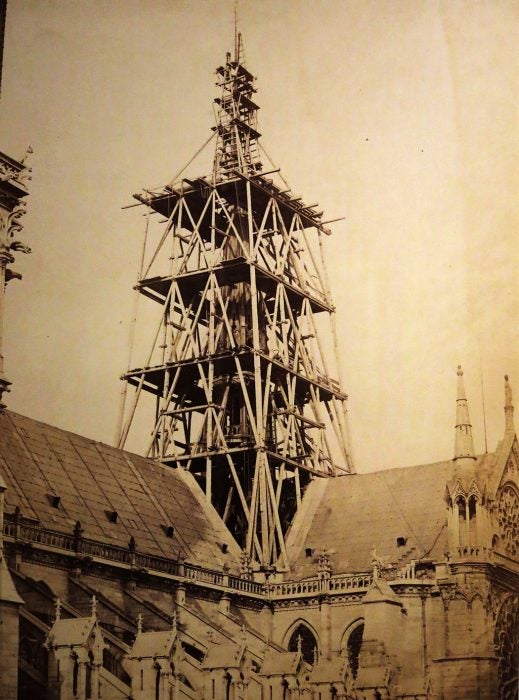The fire at Notre-Dame de Paris has captured the world’s attention. Having survived nearly nine centuries—of riots, sieges, occupations, hordes of tourists—the monumental building also seems to have survived the dramatic fire of April 15th. Those medieval foundations turned out to be pretty good bones. France’s President Macron has declared that the building will be restored to its former glory. Donations have been pledged to help pay for what promises to be a major undertaking.
Architectural historian Caroline Bruzelius calls Notre Dame “a monument of exceptional historic and artistic importance.” Bigger in height, width, and length than any Western European structure before it, the cathedral was “the earliest example of the gigantism that was to become characteristic of Gothic architecture.” The famed flying buttresses of the nave were a first.
Bruzelius meticulously studied the course of original construction. She says that the building was not “erected in a neat progression from east to west, with each segment completed before the inception of the next; instead, work was often undertaken in several widely separated parts of the building simultaneously.”
She explains that the building’s “vast scale reflects the dramatic growth of Paris in the twelfth century and the city’s emergence not only as the major commercial and intellectual center north of the Alps” but also as the center of the France monarchy. Notre-Dame faced the royal palace across the Ile-de-le Cité. The connections between absolutisms of the cross and the crown were intimate indeed.
Of course, the Notre Dame experienced by the visitors and worshippers in the early twenty-first century wasn’t the same as what those medieval masons had built and carved. The decay of time took its toll. The French Revolution was particularly hard on church buildings: Notre Dame’s bells were melted for canons in 1791. Revolutionaries chisel-guillotined many a decorative saint’s head off the exterior.

In 1844, Eugéne Viollet-le-Duc and Jean-Baptiste Lassus won a competition for a restoration project that ultimately lasted twenty-five years. The façade, spire, and interior re-jiggering we know were nineteenth century re-creations of Gothic style. In fact, Viollet-le-Duc was largely responsible for the re-Gothicization of France, directing major restoration projects in Paris and elsewhere until his death in 1879. His writings on architecture and restoration greatly influenced later architects and those involved with restoration and preservation.
Weekly Digest
Historian of architecture Aron Vinegar quotes Viollet-le-Duc’s “most infamous and enigmatic definition of restoration” to very modern effect:
To restore an edifice means neither to maintain it, nor to repair it, nor to rebuild it; it means to reestablish it in a finished state, which may in fact never have actually existed at any given moment.
What “finished state,” then, will the latest restoration/reconstruction/re-creation of Notre-Dame de Paris result in? No one can, after all, build (or rebuild) the same building twice.







